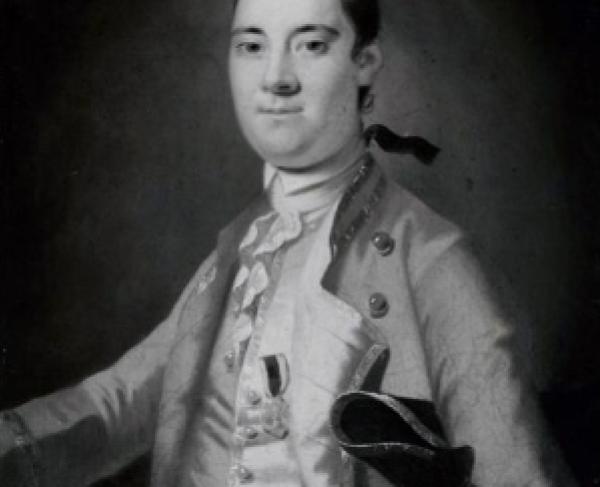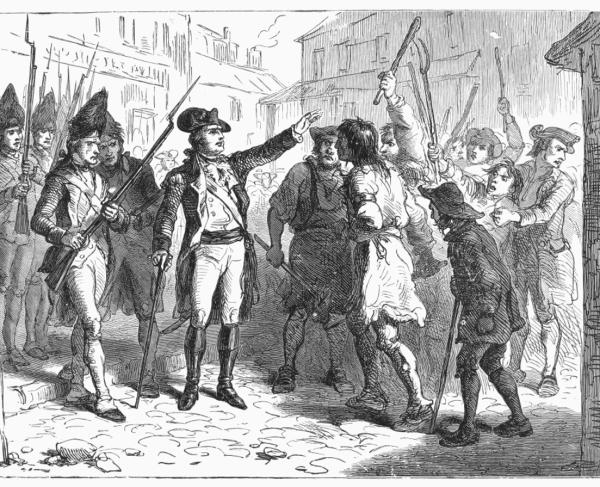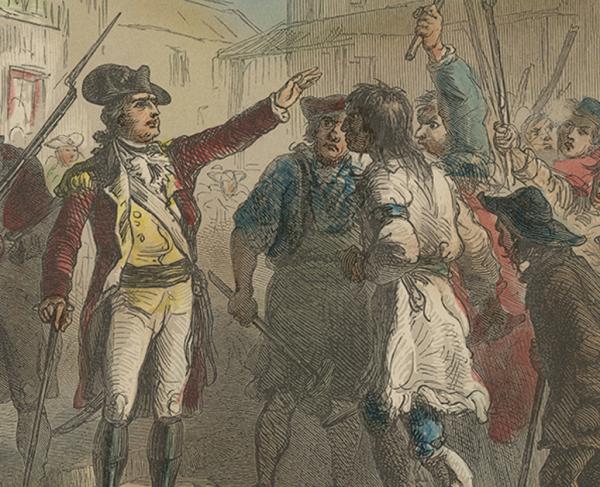
Postcard depicting the Battle of Alamance. Created by J. Steeple Davis circa 1905-1915.
Alamance
Burlington, NC | May 16, 1771
Erroneously known as the “opening salvo of the American Revolution,” the Battle of Alamance was the final battle of the Regulator Movement in the backcountry of North Carolina between Royal Governor William Tryon’s forces and the Regulators.
How It Ended
British Victory. After two hours of fighting, the Regulators sustained heavy casualties and gave way to Governor William Tryon’s forces. With this victory, Tryon moved through Regulator territory in the backcountry of North Carolina and forced Regulators and their sympathizers to sign loyalty oaths. He also confiscated or destroyed several active Regulators’ properties.
In Context
In the mid-eighteenth century, immigrants were migrating to the backcountry of North Carolina in search of cheap land to establish farms. However, many found themselves in direct contest with land speculators and public officials who they believed were using their positions to earn money at the expense of the farmers by overcharging farmers on fees or overtaxing them and pocketing the excess. By the mid-1760s, farmers began to organize and call themselves the Regulators and started the Regulator Movement, also known as the War of the Regulation. After trying to address their issues peacefully by creating community meetings and writing petitions, the movement became more violent with the Hillsborough Riot of 1770, where Regulators targeted specific public officials that they believed were abusing their power.
After the Royal governor of North Carolina, William Tryon, witnessed the Hillsborough Riot of 1770, he passed the Johnston Riot Act, which gave him the authority to raise an army against the Regulators. By mid-May 1771, Tryon’s forces numbered about 1,000 men.
2,000
1,000
On May 16, 1771, Tryon’s forces and the Regulators met at Alamance. With double the number of men, the Regulators hoped their superior numbers would scare off Tryon and force him to give in to their demands. Unfortunately for the Regulators, Tryon was not intimidated, and when Tryon attempted to order the crowd to disperse, the Regulators shouted, “Battle! Battle!” and “Fire and be damned!” Eventually, Tryon’s forces fired into the crowd. The battle lasted two hours, with heavy casualties for the Regulators.
200
70
After his victory, Tryon moved through Regulator territory in the backcountry of North Carolina and forced Regulators and their sympathizers to sign loyalty oaths. He also confiscated or destroyed several active Regulators’ properties. After the American Revolution, the memory of this battle changed from fighting between factions in North Carolina into a fight between Patriots and British troops. Because of this revision, the battle became erroneously known as the “first battle” or the “opening salvo of the American Revolution.”
While the Regulator Movement and the American Revolution fought for equality and freedom, the Regulator fought for more political power under the current colony’s political system as opposed to the Patriots in the American Revolution, who fought for a new political system that the Thirteen Colonies would control.
Alamance: Featured Resources
Related Battles
2,000
1,000
200
70




